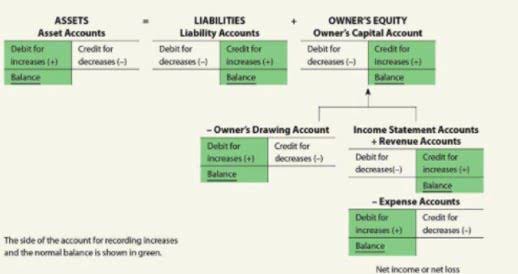
For example, a company mistakenly sold a product for $1,000 instead of $1,200. The company can notify the additional amount the buyer owes by issuing a debit memo. Based on the debit memo, both parties must rectify incorrect values in the invoiced amount. Both notes notify customers about a change in their account balance either by increase or decrease. Vendors and buyers commonly create and submit documents relating to the exchange of goods and services.
Key Components of Credit and Debit Memos
Your bank doesn’t have time to call you up and politely remind you that your account is about to be overdrawn or that your latest check bounced. Debit memos are the quick and easy way to tell you that action has already been taken. It’s crucial to remember that the account is debited in the sender’s records, not the recipient’s when it comes to the a debit memorandum would not be issued by the bank for entire phase debit memo. Debit notes can also be created by buyers when returning goods received on credit. For returned items, notes will include the total anticipated credit, an inventory of the returned items, and the reason for their return. For instance, the damaged inventory might only be 10 percent damaged and still in usable condition.
Debit Memos in Incremental Billings
However, don’t confuse this with an invoice, which is a bill of sale that has information about the nature of the goods sold, their price, and the total amount of the order. Many times when companies buy inventory from vendors the inventory is damaged in shipping or the wrong inventory is shipped. In either of these cases, the buyer has the right to return the damaged or incorrect inventory for a full refund. The good news is we put together this guide to cover the most important pieces of information. In this example, your company has done construction work for a local business. However, when sending the invoice to the business, you accidentally left off the labor cost and additional materials required for one portion of the project, equivalent to $5,000.
- It’s included on your bank statement to let you know your bank has already taken money from your checking account.
- A customer’s debt increases with a debit memo, while a credit memo reduces the accounts receivable balance.
- When issued, debit memos typically appear on the monthly statements of outstanding accounts receivable that are sent to customers.
- Debit memos can arise as a result of bank service charges, bounced check fees, or charges for printing checks.
- Debit memos are the quick and easy way to tell you that action has already been taken.
- These situations usually are referred to as bank transactions, incremental billing, and internal offsets, respectively.
Internal Offset
The main difference is that invoices always show a sale, where debit notes and debit receipts reflect adjustments or returns on transactions that have already taken place. It is rare to see the term debit receipt used for B2B transactions. Debit notes are a form of proof that one business has created a legitimate debit entry in the course of dealing with another business. This might occur when a purchaser returns materials to a supplier and needs to validate the reimbursed amount. In this case, the purchaser issues a debit note reflecting the accounting transaction. Both a debit memo and a credit memo inform clients of a change in their account status.
A debit memo is an accounting document issued in commercial transactions. Traders use it for financial adjustment, not a typical transaction. It is issued by either the buyer or the seller when the other party owns money after the payment has been made.
Who issues a debit memo?
Then, it gets debited from your account and is then recorded as a debit memo. In some cases, debit memos can get used to help rectify inaccurate account balances. If a customer’s account has a credit balance of insubstantial value, a company can issue a debit memo to clear out the balance.
When this happens, a debit memorandum gets noted on your bank statement. This is so you know exactly what has happened and why it has occurred. Maybe you have seen one before in one of your bank statements, such as for your checking account.
- If you write a check to a friend but don’t have enough money in your checking account to cover it, the check will bounce when your friend goes to deposit or cash it.
- In such cases, businesses can issue a debit note to the buyer, indicating the extra amount that needs to be paid by the buyer.
- Issuing a debit memo is a business practice that ensures transparent communication and elucidates why additional charges are necessary, fostering clarity and trust in client relationships.
- Debit memorandums are also commonly referred to as a debit memo or a debit note.
- The debit memo gets indicated by a minus sign next to the charge, and it is typically sent to bank customers with their monthly bank statements.
A vendor may create and send their customer a debit note to remind them that there is a payment due for goods and services delivered. In other cases, a customer may issue a debit note to their supplier about an adjustment to their order, including the total amount of goods returned and their value. To apply for this discount, the buyer will issue the seller a debit memorandum. The debit memo notifies the seller than the buyer has received nonconforming goods, wants to keep them, and is debiting its payable account for the discounted price. When the buyer debits its accounts payable, it is reducing the amount of money that it owes the seller in the buyer’s accounting system. The seller can then agree to the debit memorandum and adjust its accounts receivable for the discount as well.

No matter what the memo gets used for, there are a few elements that should always get included. These include tax details, descriptions, total price, reference numbers, and payment terms. Here are two real-life examples of bank memos, one for regular consumer checking accounts and one for a B2B transaction. It represents an adjustment to an account that reduces a customer's balance.
